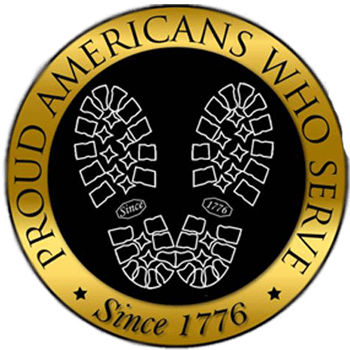The highlighted events that took place in our country in 1776 leading to the Declaration of Independence
1776
$40.00 – $43.00
Size Chart

To ensure your polo fits after multiple washings and if you also wear an undershirt, the polo fabric will be cut 1/3 size larger than standard cut sizes.
So, if you wear another brand’s X-Large Polo and it fits or is slightly snug, then our X-Large polo will fit “comfortably”*. If on the other hand; the other brand’s Polo X-large is “perfect or slightly loose”**, then you may consider ordering one size smaller than what you normally wear. Our polo’s were created with long term wear in mind and in the event they shrink due to high heat drying; the polo will wear as the size promised.
* The term “comfortably” refers to the polo having very little to no skin contact around the torso and abdomen area.
** “Perfect or slightly loose” is referring to the other brand’s polo that wears as desired in its NEW unwashed condition.
Some shirts that are non-polyester or polyester/cotton mix will shrink with washing and drying. Please consider this when placing your order to avoid getting a too small or large polo.
How to measure

Description
This year is celebrated in the United States as the official beginning of the nation, with the Declaration of Independence issued on July 4.
These are the highlight events that took place in our country in 1776:
January
- January 10 – Thomas Paine publishes Common Sense.
- January 20 – American Revolution: South Carolina Loyalists led by Robert Cunningham sign a petition from prison agreeing to all demands for peace by the newly formed state government of South Carolina.
- January 24
- American Revolution: Henry Knox arrives at Cambridge, Massachusetts, with the artillery that he has transported from Fort Ticonderoga.
- American Revolution: The Continental Congress writes the third and final letter to the inhabitants of Canada urging Quebec to join the revolution.
February
February 27 – American Revolution: Battle of Moore’s Creek Bridge: North Carolina Loyalists charge across Moore’s Creek bridge near Wilmington to attack what they mistakenly believe to be a small force of rebels. Several loyalist leaders are killed in the ensuing battle. The patriot victory virtually ends all British authority in the town.
March
March 2–3 – American Revolution: Battle of the Rice Boats: Following the British seizure of rice from merchant ships on the Savannah River, militia from Georgia and South Carolina attack the British squadron on the river using fire ships.
- March 3–4 – Raid of Nassau.
- March 4 – American Revolution: The Americans capture “Dorchester Heights” dominating the port of Boston, Massachusetts.
- March 17 – American Revolution: Threatened by Patriot cannons on Dorchester Heights, the British evacuate Boston.
- March 28 – Juan Bautista de Anza finds the site for the Presidio of San Francisco.
April
April 12 – American Revolution: The Royal Colony of North Carolina produces the Halifax Resolves making it the first British colony to officially authorize its Continental Congress delegates to vote for independence from the Kingdom of Great Britain.
- April 15 – Archibald Bulloch is sworn in as the first governor of Georgia.
May
- May 4 – American Revolution: Rhode Island becomes the first American colony to renounce allegiance to King George III of Great Britain.
- May 15 – American Revolution: The Continental Congress passes John Adams’ preamble, explaining why a declaration of independence was being proposed. The Lee Resolution of independence is first brought before Congress.
June
- June 7 – American Revolution: Richard Henry Lee of Virginia proposes to the Continental Congress the Lee Resolution that “these united colonies are, and of right ought to be, free and independent states.”
- June 8 – American Revolution: Battle of Trois-Rivières: American invaders are driven back at Trois-Rivières, Quebec.
- June 11 – American Revolution: The Continental Congress appoints the Committee of Five to draft the Declaration of Independence. The principal draft will be written by Thomas Jefferson.
- June 12 – American Revolution: Virginia Declaration of Rights by George Mason adopted by the Virginia Convention of Delegates.
- June 15 – American Revolution: Delaware Separation Day: The Delaware General Assembly votes to suspend government under the British Crown.
- June 17 – Lt. Jose Joaquin Moraga leads a band of colonists from Monterey Presidio, landing on June 29 and, with Father Francisco Palóu, constructing the Mission San Francisco de Asís (“Mission Dolores”) of the new Presidio of San Francisco, the oldest surviving building in the modern-day city.
- June 28 – Battle of Sullivan’s Island.
- June 28 – American Revolution: The Committee of Five presents their United States Declaration of Independence to the Continental Congress, which begins a further revision process, removing reference to slavery.
- June 29 – American Revolution: Battle of Turtle Gut Inlet– The Continental Navy successfully challenges the British Royal Navy blockade off Cape May County, New Jersey.
July
- July 1 – American Revolution: Congress sitting as a committee of the whole votes in favor of independence.
- July 2 – American Revolution: The final (despite minor revisions) U.S. Declaration of Independence is written. The full Continental Congress passes the Lee Resolution.
- July 3 – American Revolution: British troops first land on Staten Island, which will become the longest occupied land for the duration of the conflict.
- July 4
- American Revolution: The United States Declaration of Independence, in which the United States officially declares independence from the British Empire, is approved by the Continental Congress and signed by its President, John Hancock, together with representatives from Connecticut, Delaware, Georgia, Maryland, Massachusetts Bay, New Hampshire, New Jersey, New York, North Carolina, Pennsylvania, Rhode Island, South Carolina and Virginia.
- John Rutledge is sworn in as the 31st governor of South Carolina.
- July 5 – Patrick Henry is sworn in as the first governor of Virginia.
- July 8 – American Revolution: The Liberty Bell rings for the first public reading of the Declaration of Independence at the Pennsylvania State House in Philadelphia.
- July 9 – American Revolution: An angry mob in New York City topples the equestrian statue of George III in Bowling Green.
- July 29 – Francisco Silvestre Vélez de Escalante, Francisco Atanasio Domínguez, and eight other Spaniards set out from Santa Fe on an eighteen-hundred mile trek through the American Southwest. They are the first Europeans to explore the vast region between the Rockies and the Sierras.
August
- August 12 – American Revolution: A parchment copy of the Declaration of Independence is signed by 56 members of Congress (not all of whom had been present on July 4).
- August 15 – American Revolution: First Hessian troops land on Staten Island to join British forces.
- August 27 – American Revolution: Battle of Long Island: Washington’s troops routed in Brooklyn by British under William Howe.
- August 31 – William Livingston is sworn in as the first governor of New Jersey.
September
- September 1 – Invasion of Cherokee Nation by 6,000 patriot troops from Virginia, North Carolina, and South Carolina begins. The troops destroy thirty-six Cherokee towns.
- September 7 – American Revolution: World’s first submarine American submersible craft Turtle attempts to attach a time bomb to the hull of British Admiral Richard Howe’s flagship HMS Eagle in New York Harbor.
- September 11 – American Revolution: The British and Americans meet at the Staten Island Peace Conference seeking to end the revolution. The meeting is brief and unsuccessful.
- September 15 – American Revolution: British land on Manhattan at Kip’s Bay.
- September 16 – American Revolution: Battle of Harlem Heights is fought, and won, making it Washington’s first battle field victory.
- September 22 – American Revolution: Nathan Hale executed in New York City for espionage.
October
- October 9 – Father Francisco Palou founds Mission San Francisco de Asis in what is now San Francisco, California.
- October 10 – Johnathan Trumbull is sworn in as the 16th governor of the Newley formed state of Connecticut.
- October 11 – American Revolution: Battle of Valcour Island: On Lake Champlain near Valcour Island, a British fleet led by Sir Guy Carleton defeats 15 American gunboats commanded by Brigadier General Benedict Arnold. Although nearly all of Arnold’s ships are destroyed, the two-day-long battle will give Patriot forces enough time to prepare defenses of New York City.
- October 28 – American Revolution: Battle of White Plains: British forces arrive at White Plains, attack and capture Chatterton Hill from the Americans.
- October 31 – In his first speech before British Parliament since the Declaration of Independence that summer, King George III acknowledges that all is not going well for Britain in the war with the United States.
November
- November 16 – American Revolution: Battle of Fort Washington– Hessian forces under Lieutenant General Wilhelm von Knyphausen capture Fort Washington (Manhattan) from the American Continental Army.
- November 20 – American Revolution: Battle of Fort Lee– Invasion of New Jersey by British and Hessian forces and subsequent general retreat of the Continental Army.
December
- December 5 – Phi Beta Kappa honor society founded at the College of William and Mary.
- December 7 – American Revolution: Marquis de Lafayette attempts to enter the American military as a major general.
- December 14 – American Revolution: Ambush of Geary
- December 19 – American Revolution: Thomas Paine, living with Washington’s troops, publishes the first in the series of pamphlets on The American Crisis in The Pennsylvania Journal, opening with the stirring phrase, “These are the times that try men’s souls.”
- December 21 – American Revolution: The Royal Colony of North Carolina reorganizes into the State of North Carolina after adopting its own constitution. Richard Caswell becomes the first governor of the newly formed state.
- December 22–23 – American Revolution: Battle of Iron Works Hill
- December 25 – American Revolution: At 6 p.m. Gen. George Washington and his troops, numbering 2,400, march to McConkey’s Ferry, cross the Delaware River, and land on the New Jersey bank by 3 a.m. the following morning.
- December 26 – American Revolution: Battle of Trenton: Washington’s troops surprise the 1500 Hessian troops under the command of Col. Johann Rall at 8 a.m. outside Trenton and score a victory, taking 948 prisoners while suffering only 5 wounded.
Dry-Fit Jersey Mesh Polo
The entire Proud Americans Who Serve Polo line is made with high quality Jersey mesh polyester material to ensure you have a polo shirt that will be the same size and quality after numerous washes with colors to that are unwavering in detail and resilience in color.
The Proud Americans Who Serve polo has unparalleled breathability for superior cooling. The Jersey mesh technology ensures breathable comfort all day long. This technology locks in color; keeping the designs and colors crisp-making these polos a must have fan favorite all season long.
The Proud Americans Who Serve Polos are made with flat lock stitching using 4 needles with 6 threads overlocking.
Polo Details:
165 gsm / 4.87-ounce, 100% Jersey mesh polyester (front, back, and side panels)
Moisture wicking, eco-friendly, quick dry material
Around the neck tag-free label
Flat knit collar
3-button placket with dyed-to-match black buttons
Set-in, open hem sleeves
The official Proud Americans Who Serve label inside the collar
Unisex
Packaged in individual polybags
Caring for your Proud Americans Who Serve Polo
Please adhere to these washing and drying instructions to ensure your shirt last for years to come.
- MACHINE WASH COLD
- WASH INSIDE OUT WITH LIKE COLORS
- DO NOT USE SOFTNERS
- REMOVE IMMEDIATELY
- DO NOT ALLOW TO LAY ON ITSELF WHEN WET
- DO NOT BLEACH
- COOL IRON
- DO NOT IRON DESIGN
- DO NOT DRY CLEAN
- TUMBLE DRY LOW
Additional information
| Weight | N/A |
|---|---|
| Dimensions | N/A |
| Size | 4X-Large, 4XL, 6X-Large, XSmall, Small, Medium, Large, X-Large, XX-Large, XXX-Large |
Only logged in customers who have purchased this product may leave a review.













Reviews
There are no reviews yet.